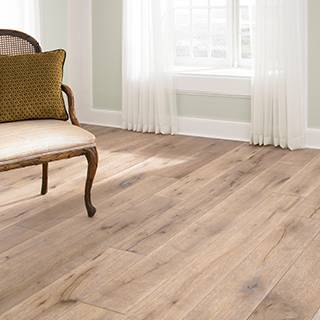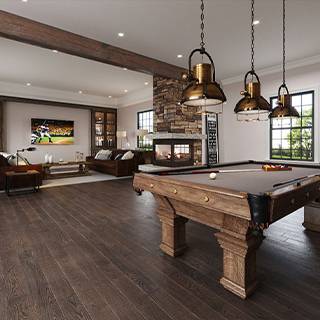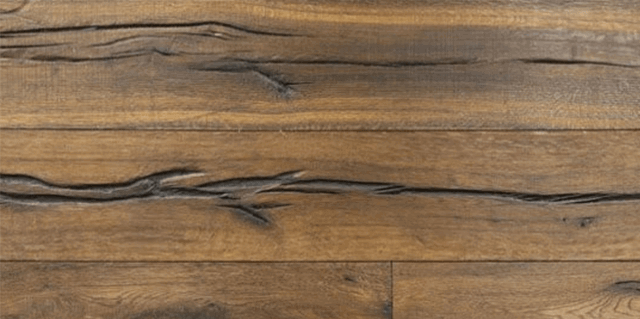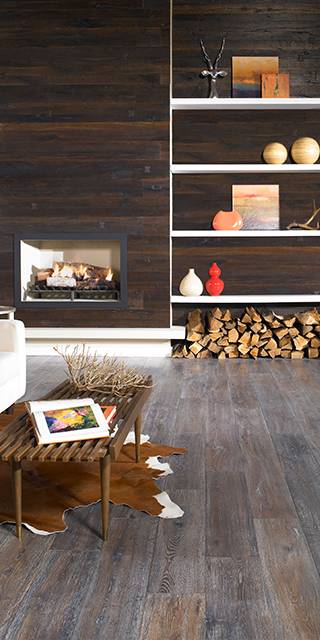How does a log become a floor?
July 28, 2014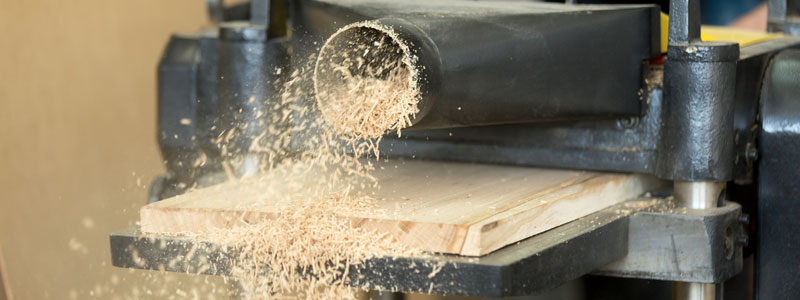
If our post in May about where wood for flooring comes from left you wondering, “But what happens next?” fear not—your long-awaited answer has arrived. In that post, we explained how a tree becomes a log and how this is done while still preserving our forests. Now, we’ll tell you how a log becomes your hardwood floor.
Once the right logs have been selected and safely harvested, they make their way, usually by truck and sometimes train, to the saw mill. These days, most saw mills, especially the ones that mill wood for floors, are highly automated and use sophisticated machines to transform round logs into flat boards.
STEP 1: Debarking

The first machine the log meets is the debarking machine. It does exactly what it sounds like it would do—it removes the bark from the outside of the log, from one end to the other, all the way around in one continuous motion. In most mills, the bark is collected and used as fuel in the kilns used to dry the wood. But we’ll get to those later.
STEP 2: The first cut
After the log is shaved smooth, it rolls onto another machine, where an expert or, in many cases, a laser, determines how the log should be cut to produce the best and most usable boards. Once this is determined, the first cut is made, creating one flat side. The strip that has been sliced off is either sent to the chipper or, in some mills, sent to another machine to be made into something more delicate like crown molding or trim.
STEP 3: Slicing
As we mentioned in our post about floor movement, wood for lumber is generally categorized in one of three ways—plainsawn (flatsawn), riftsawn, or quartersawn—depending on the cut of the wood. This does not mean, however, that there are only three ways to saw a log. In fact, there are some cuts that yield more than one kind of board. The classification is based on the angle of the grain once the board is cut, and each yields a board with a distinctive surface pattern.
In some cases, for instance, the log is sawn flat across from the first flat side to the bottom. This will yield several boards of each type. If the goal is to produce mostly plainsawn boards, the log will be turned 90 degrees after the first few cuts to keep the grain at the correct angle. When more quartersawn or riftsawn boards are needed, the log may be cut from four “corners” of the log, yielding some riftsawn and some quartersawn boards or may be cut at an angle from the outside edge to produce only boards with a specific grain. Each of these sawing methods produces progressively fewer usable boards per log, which is why rift- and quartersawn boards tend to be more costly.
Plainsawn boards are identifiable by the familiar “cathedral” pattern on their surface and by the fairly horizontal grain when viewed from one end.
The grain of riftsawn boards is more diagonal, about 30-60 degrees from the face of the board. The surface of these boards tends to display a narrow, straight, and relatively consistent grain pattern with few irregularities.
Boards with grain 60-90 degrees from the surface are called quartersawn (because they are often produced by first quartering and then sawing a log). These yield boards with very distinctive markings on the surface called “figure” or “flecks”. These are much more prominent in certain species than in others.
All three of these “cuts” can be used for hardwood flooring and, in some instances, you will see all three in one floor. More often, though, a hardwood floor will be made from either plainsawn or a mix of rift-and quartersawn boards.
STEP 4: Trimming
Now the logs are the right thickness and roughly the right size, but they may still have some rough edges. Until, of course, they get to the machine number four, the edger. Named as descriptively as its debarking brother, the edger does exactly what one might think—it slices the edges of the boards to create square corners and standard sizes.
STEP 5: Customizing
Once the boards are of a desired width, they go to a rough rough knot saw where major defects are removed. It also cuts excessively long pieces down to more usable lengths. The sawyers that operate these machines are careful to choose cuts that will produce the best yield.
The second machine in this part of the process is the sidematcher (sometimes an endmatcher), which planes the boards to an exact thickness and creates the tongues and grooves that will enable them to fit together so precisely.
STEP 6: Grading
Here in the U.S., logs are graded into four categories: Veneer, the highest quality, and Grades 1, 2 and 3. Veneer grade wood is essentially free of defects and considered of high enough quality to be used for surfacing high-quality furniture, etc. Grade 1 lumber is typically used for furniture, cabinets, and, sometimes, flooring. More commonly, hardwood flooring is made from Grade 2 or 3 lumber, while Grade 3 lumber is set aside for use in pallets and similar products.
STEP 7: Drying

Though most lumber is stacked by machines these days, the finished piles look very much the same.
As the lumber is graded, it is separated onto pallets which are then either set outside to pre-dry for several months or put directly into a kiln. Depending on what the wood is to be used for, the wood will remain in the kiln, typically at temperatures of 100 to 180 degrees, until it reaches a specific moisture content between 6 and 9 per cent. For hardwood floors, the moisture content will be on the lower end of this range.
STEP 8: Finishing
Once the wood is dried, it leaves the mill, either to be sent to a distributor or to a hardwood floor manufacturer. If the floor to be finished onsite, this is the last step before it reaches its final home. If it is to be pre-finished (factory finished), it will go first to a flooring manufacturer, which will apply a unique polyurethane finish and whatever stain may be desired. From there it will be sent to a distributor like MacDonald hardwoods, which will make sure it finds a good home.
Image credits: Debarked logs, wikimedia; Riftsawn surface, “MountainAshFloor” by Mark Anthony Boyle; quartersawn surface, hobbithouseinc.com








